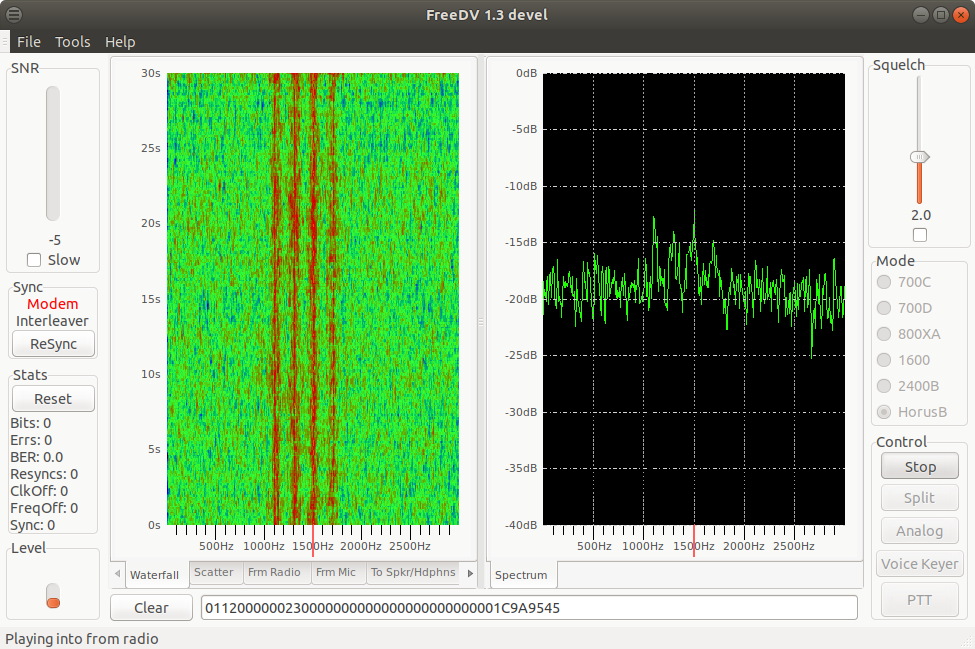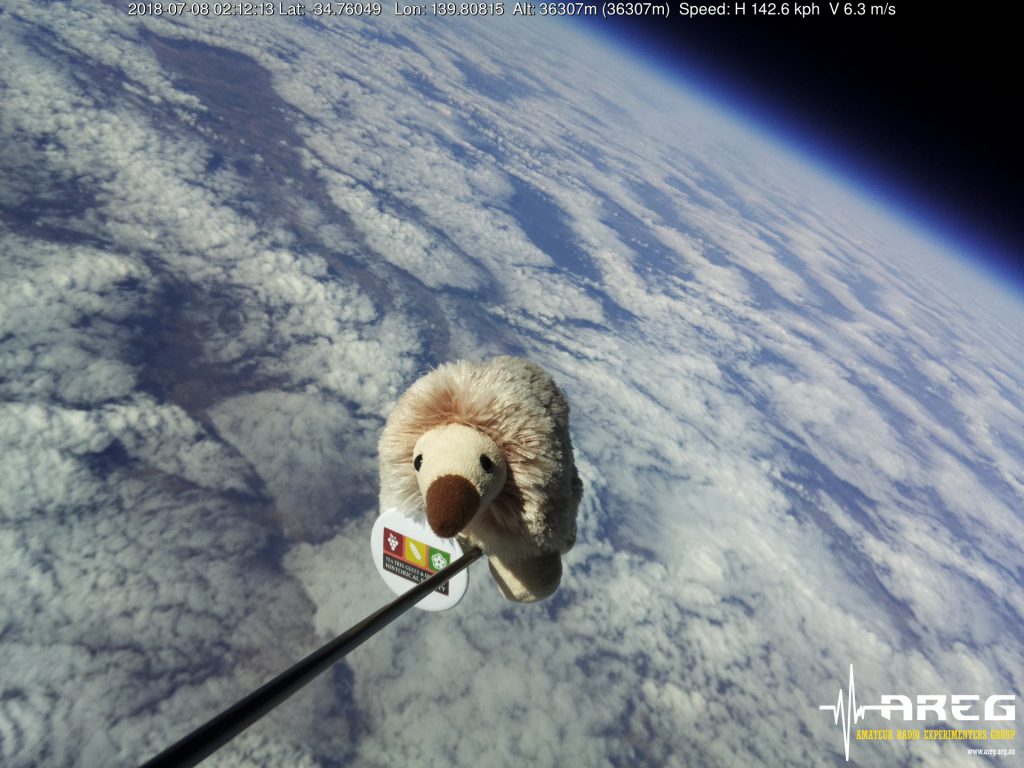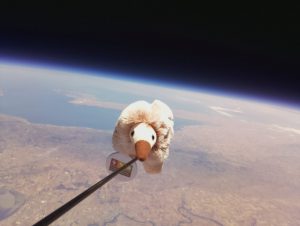UPDATE: Anstey was successfully launched to a height of 36374 metres, followed by a landing in the Murray Mallee and a recovery by AREG and Riverland Radio Club members. A full write-up of the launch will be posted in the next few days.
Back in 2016, AREG & Project Horus helped Anstey the Echidna, the Tea Tree Gully Library’s mascot, explore near-space. Anstey didn’t have enough fun on the previous launch, and so on the 8th of July 2018, we will be re-launching Anstey back into near-space on a high-altitude balloon launch!
The launch is currently scheduled for 10AM CST on Sunday the 8th July, however as usual, weather conditions may cause this to be re-scheduled. The launch will be from the Mt Barker High School Oval, and spectators are welcome. Launch crew should be on-site from approximately 9AM.
Tracking of the flight will be available via the HabHub tracker.
Telemetry Information
The telemetry frequencies for the flight are as follows:
- RTTY Telemetry – ‘HORUS’ – 434.650 MHz (100 baud, 425 Hz Shift, 7N2)
- Wenet Imagery – 441.200 MHz (Wenet 115kbps FSK)
- Experimental Horus Binary Payload – 434.640 MHz (100 baud 4FSK)
As usual, the RTTY telemetry can be decoded using dl-fldigi.
Note: Recent testing of dl-fldigi’s decode performance has found that the auto-configured RTTY receive bandwidth is too narrow, and can detrimentally impact decode performance (by up to 3dB!).
To fix this, open dl-fldigi, and in the Configure menu, select Modems, and then go to the ‘RTTY’ tab. Drag the ‘Receive filter bandwidth’ slider to 200, then click ‘Save’. Note that this setting will be reset whenever you hit the ‘Auto-Configure’ button!
Wenet Imagery
As with most Project Horus launches, this flight will feature live imagery via the Wenet high-speed imagery downlink. Images will be available throughout the flight at this link:
Reception of the Wenet signal requires a RTLSDR and a Linux PC/Laptop. Instructions on how to set up the required software are available here.
Experimental 4FSK Telemetry
This launch will include the use of a re-purposed Vaisala RS41 radiosonde, programmed to transmit a new binary 4FSK telemetry mode, developed by David VK5DGR and Mark VK5QI. This new mode is intended to eventually (read: probably a year away) replace RTTY telemetry on Horus flights. It runs at 100 baud, is approximately 850 Hz in bandwidth, and has an almost 6dB performance improvement over the current RTTY telemetry! 
Decoding this telemetry requires installation of a new decoder application (an updated version of FreeDV), and some helper scripts to upload the data to the online tracker. A guide on how to install and operate this new decoder is available here.
Conclusion
More information will be available closer to the flight!



